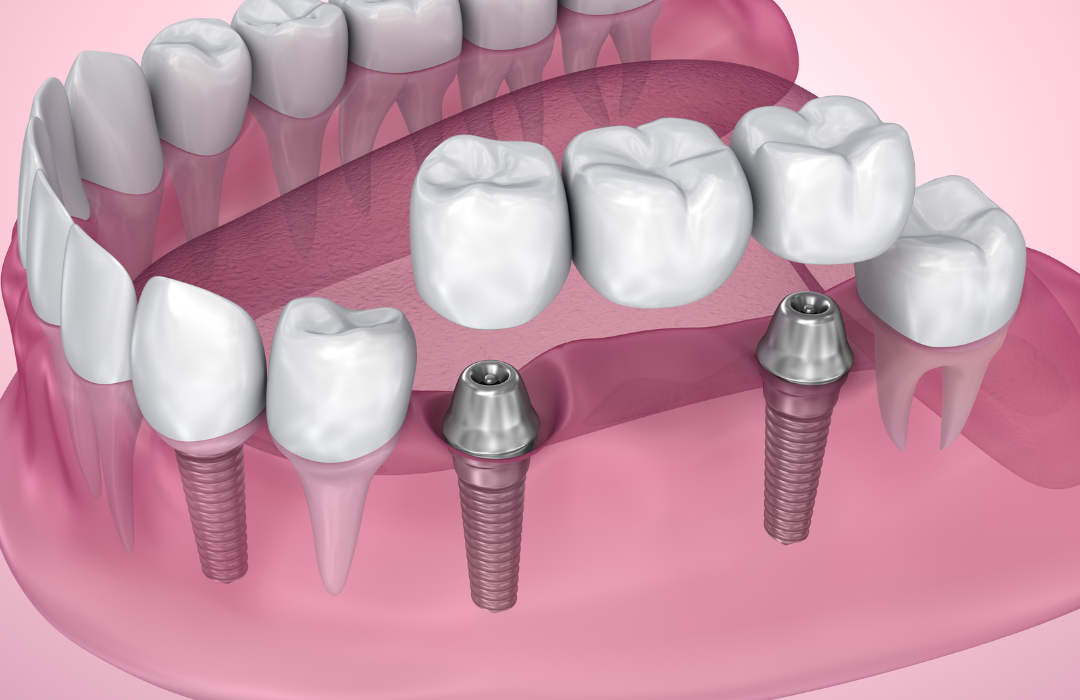Understanding Fixed Bridges: Types, Materials, and Benefits

Learn more about fixed bridges, including steps, materials, and aftercare. Fixed bridges are prosthetic devices that replace missing teeth by using neighboring natural teeth as support, restoring both function and aesthetics.
Table of Contents
What is a Fixed Bridge?
A fixed bridge is a dental restoration that replaces one or more missing teeth by spanning the gap between two existing teeth or dental implants. It is called a fixed bridge because it is not removable. A bridge is a structure supported by teeth on either side of a space. It spans the gap between teeth like a bridge span a river. It consists of artificial teeth, known as pontics, securely attached to dental crowns or abutments on either side of the gap. The crowns or abutments are cemented or bonded onto the adjacent teeth or implants, creating a stable and permanent bridge that restores the missing teeth’ function and appearance. Fixed bridges are a popular and reliable solution for restoring the smile, improving chewing ability, and maintaining the alignment of surrounding teeth.
How is a Fixed Bridge Made?
The first step is to prepare the supports for the bridge. Replacement crowns are placed over existing teeth as supports for a bridge. The dentist pares down the teeth on either side of the gap and takes an impression of the prepared teeth. This is then sent to the dental technician, where the bridge is made. The technician will make a replacement crown for each prepared tooth. These crowns are joined to an artificial tooth, which replaces the missing tooth. The dentist will then cement the completed bridge over the prepared teeth.
How Will My Pared-Down Teeth Be Protected Until I Receive My Fixed Bridge?
Your dentist may provide temporary crowns or dental splints to protect your pared-down teeth until you receive your fixed bridge. Temporary crowns are usually made of acrylic material and are placed over the prepared teeth to provide protection and maintain their position. These temporary crowns help to restore your bite and prevent sensitivity or further damage to the exposed teeth. Dental splints, on the other hand, are used when multiple teeth are involved in the bridge preparation. They are custom-made devices that connect the adjacent teeth, providing stability and support during the interim period. These temporary solutions allow you to eat, speak, and smile with relative comfort while you await the placement of your permanent fixed bridge. Following your dentist’s instructions for oral hygiene and care is essential to ensure the temporary restorations remain intact and your teeth are safeguarded effectively.
What is a Fixed Bridge Made of?
A fixed bridge is typically made of various materials, with the choice depending on factors like aesthetics, durability, and the location of the bridge in the mouth. The most common materials for fixed bridges are porcelain fused to metal (PFM) and all-ceramic. PFM bridges consist of a metal substructure covered with porcelain, providing strength and a natural appearance. On the other hand, all-ceramic bridges are entirely made of ceramic materials, such as zirconia or lithium disilicate. These bridges offer excellent aesthetics, mimic natural teeth, and are metal-free, making them an attractive option for patients with metal sensitivities. Both PFM and all-ceramic bridges are designed to blend seamlessly with the surrounding teeth, providing a durable and visually appealing solution for replacing missing teeth.
Does the Preparation of a Fixed Bridge Hurt?
The preparation of bridgework is typically performed under local anesthesia, ensuring you won’t feel any pain during the procedure. However, you may experience some temporary sensitivity or discomfort after the anesthesia wears off, but this can usually be managed with over-the-counter pain relievers as recommended by your dentist.
Will There Be Any Sensitivity After the Fixed Bridge is Placed in My Mouth?
It is possible to experience some sensitivity after placing bridges in the mouth. This sensitivity can occur due to several factors, including the adjustment period for your gums and teeth to the new restoration, changes in your bite alignment, or the bridge’s proximity to the gum line. However, this sensitivity is temporary and should subside over time as your mouth adjusts to the bridge. If the sensitivity persists or becomes severe, it is advisable to consult with your dentist to ensure the proper fit and functionality of the bridge.
Do Fixed Bridges Look Natural?
Fixed bridges can be made to look natural and to match the adjoining natural teeth. A bridge in the front of the mouth will restore and even improve the smile.
Will I Be Able to Chew with a Fixed Bridge?
Eating with a fixed bridge should be as comfortable as with natural teeth. A fixed bridge is designed to restore your ability to chew and bite effectively. Once the bridge is securely in place, it functions similarly to natural teeth, allowing you to chew a wide range of foods confidently. However, it may take a short adjustment period for your mouth to become accustomed to the new bridge. You may initially experience slight sensitivity or discomfort while chewing, but this should gradually diminish. It is important to follow any dietary recommendations provided by your dentist during the initial healing phase. A properly fitted and well-maintained fixed bridge should allow you to chew comfortably and enjoy a varied diet.
Do Fixed Bridges Have a High Success Rate?
Fixed bridges have a high success rate and are considered reliable and effective dental restoration. The long-term success of a fixed bridge depends on various factors, including proper oral hygiene, regular dental check-ups, and the overall oral health of the supporting teeth and gums. Fixed bridges can last many years, providing functional and aesthetic benefits when correctly cared for. However, individual experiences may vary, and occasionally, complications such as fracture, wear, or loosening of the bridge components can occur. Your dentist will provide specific instructions on maintenance and follow-up care to maximize the success and longevity of your fixed bridge.
Fixed Bridges FAQs
Candidates for fixed bridges are individuals who have one or more missing teeth and have healthy teeth adjacent to the gap. They should have a stable oral health condition, sufficient bone support, and healthy gums. Candidates should also be committed to maintaining good oral hygiene practices and regular dental check-ups. The suitability for fixed bridges may vary depending on individual circumstances, such as the number and location of missing teeth, overall oral health, and personal preferences. It is best to consult with a dentist who can evaluate your situation and recommend the most suitable treatment options, including fixed bridges or alternative solutions like dental implants or removable partial dentures.
A crown and a bridge are dental restorations but serve different purposes. A crown, or a dental cap, covers and protects a single damaged or decayed tooth. It is custom-made to fit over the prepared tooth, restoring its shape, strength, and appearance. On the other hand, a bridge replaces one or more missing teeth by spanning the gap between two existing teeth or dental implants. It consists of artificial teeth (pontics) attached to crowns on either side, and these crowns are cemented or bonded onto the adjacent teeth or implants to create a stable and permanent restoration. A crown covers an individual tooth, while a bridge replaces missing teeth by connecting to surrounding teeth or implants.
The overall satisfaction with fixed bridges is generally high, and most people who receive them do not regret their decision. Fixed bridges offer a durable and aesthetically pleasing solution for replacing missing teeth and improving function and appearance. However, individual experiences and preferences may vary, and individuals need to consult with their dentist, consider all available options, and make an informed decision based on their specific needs and circumstances to minimize the chances of regret.
